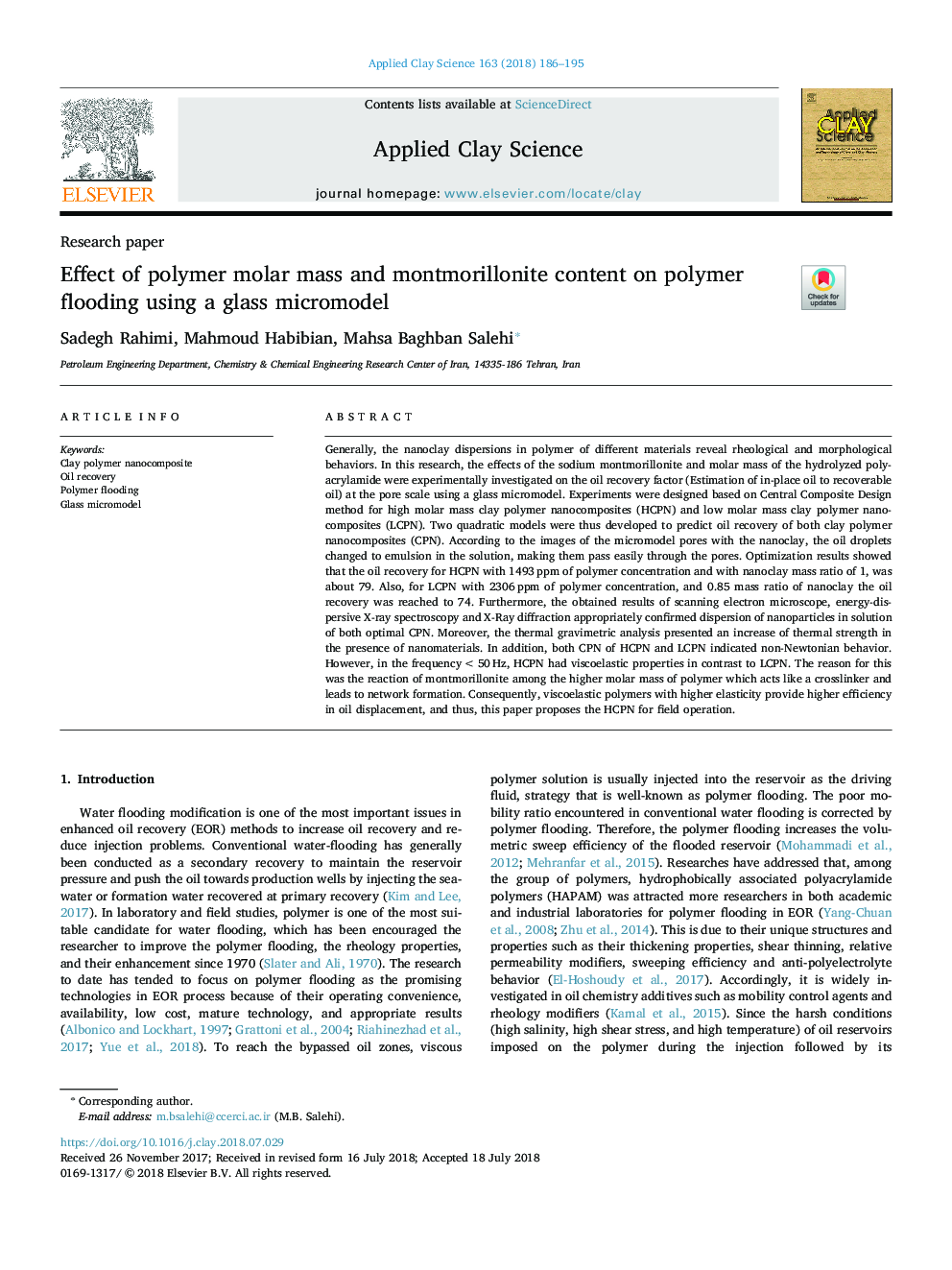| کد مقاله | کد نشریه | سال انتشار | مقاله انگلیسی | نسخه تمام متن |
|---|---|---|---|---|
| 8045618 | 1519025 | 2018 | 10 صفحه PDF | دانلود رایگان |
عنوان انگلیسی مقاله ISI
Effect of polymer molar mass and montmorillonite content on polymer flooding using a glass micromodel
ترجمه فارسی عنوان
اثر توده مولی مولکولی و محتوای مونتموریلونیت روی سیلندر پلیمری با استفاده از میکرو مولد شیشه ای
دانلود مقاله + سفارش ترجمه
دانلود مقاله ISI انگلیسی
رایگان برای ایرانیان
کلمات کلیدی
نانوکامپوزیت پلیمری خاک رس، بازیافت نفت، سیل پلیمری، شیشه میکرومولید،
موضوعات مرتبط
مهندسی و علوم پایه
علوم زمین و سیارات
ژئوشیمی و پترولوژی
چکیده انگلیسی
Generally, the nanoclay dispersions in polymer of different materials reveal rheological and morphological behaviors. In this research, the effects of the sodium montmorillonite and molar mass of the hydrolyzed polyacrylamide were experimentally investigated on the oil recovery factor (Estimation of in-place oil to recoverable oil) at the pore scale using a glass micromodel. Experiments were designed based on Central Composite Design method for high molar mass clay polymer nanocomposites (HCPN) and low molar mass clay polymer nanocomposites (LCPN). Two quadratic models were thus developed to predict oil recovery of both clay polymer nanocomposites (CPN). According to the images of the micromodel pores with the nanoclay, the oil droplets changed to emulsion in the solution, making them pass easily through the pores. Optimization results showed that the oil recovery for HCPN with 1493â¯ppm of polymer concentration and with nanoclay mass ratio of 1, was about 79. Also, for LCPN with 2306â¯ppm of polymer concentration, and 0.85 mass ratio of nanoclay the oil recovery was reached to 74. Furthermore, the obtained results of scanning electron microscope, energy-dispersive X-ray spectroscopy and X-Ray diffraction appropriately confirmed dispersion of nanoparticles in solution of both optimal CPN. Moreover, the thermal gravimetric analysis presented an increase of thermal strength in the presence of nanomaterials. In addition, both CPN of HCPN and LCPN indicated non-Newtonian behavior. However, in the frequency <50â¯Hz, HCPN had viscoelastic properties in contrast to LCPN. The reason for this was the reaction of montmorillonite among the higher molar mass of polymer which acts like a crosslinker and leads to network formation. Consequently, viscoelastic polymers with higher elasticity provide higher efficiency in oil displacement, and thus, this paper proposes the HCPN for field operation.
ناشر
Database: Elsevier - ScienceDirect (ساینس دایرکت)
Journal: Applied Clay Science - Volume 163, October 2018, Pages 186-195
Journal: Applied Clay Science - Volume 163, October 2018, Pages 186-195
نویسندگان
Sadegh Rahimi, Mahmoud Habibian, Mahsa Baghban Salehi,
